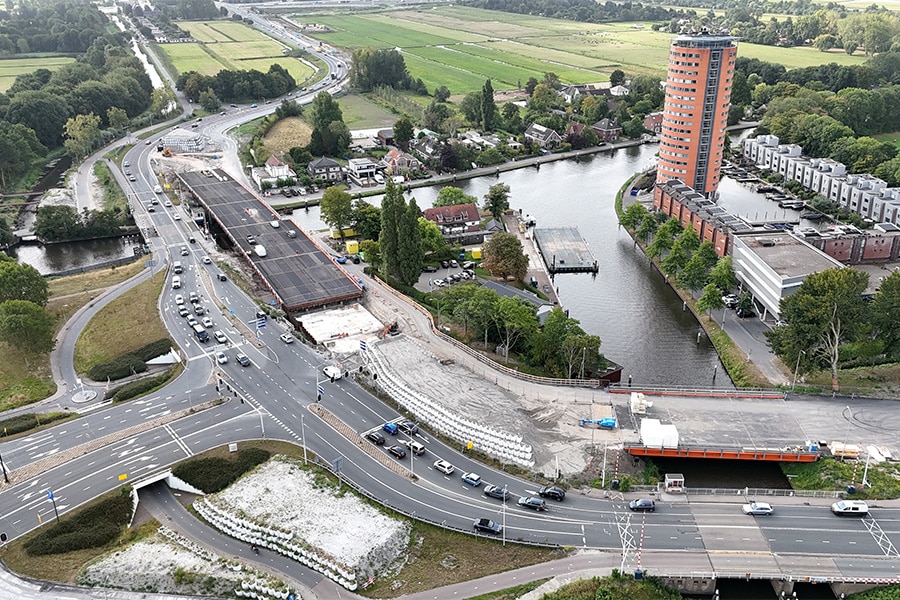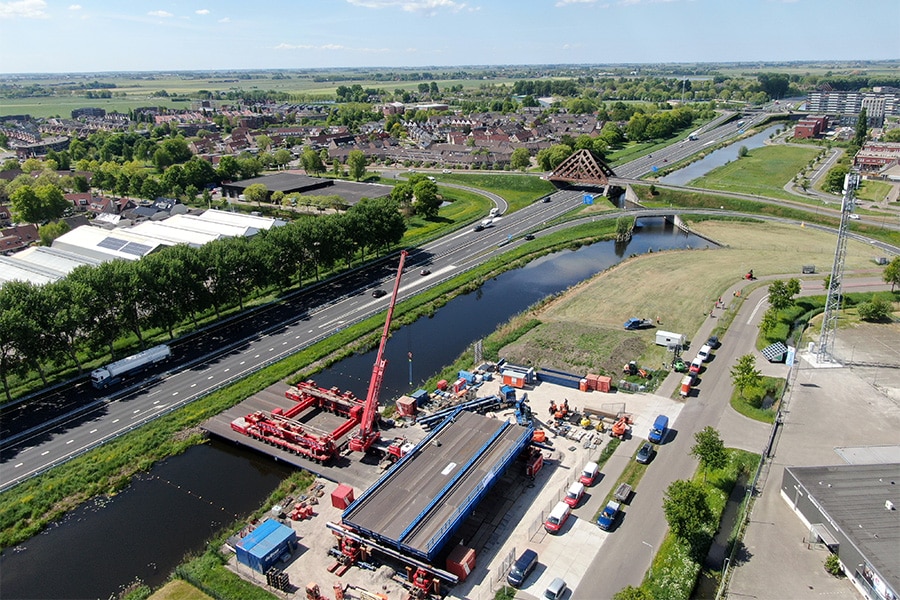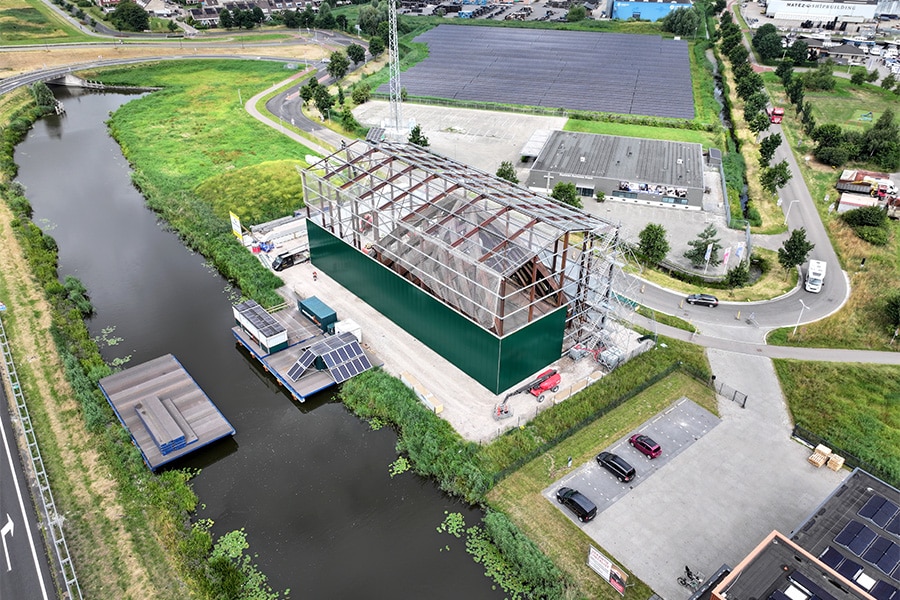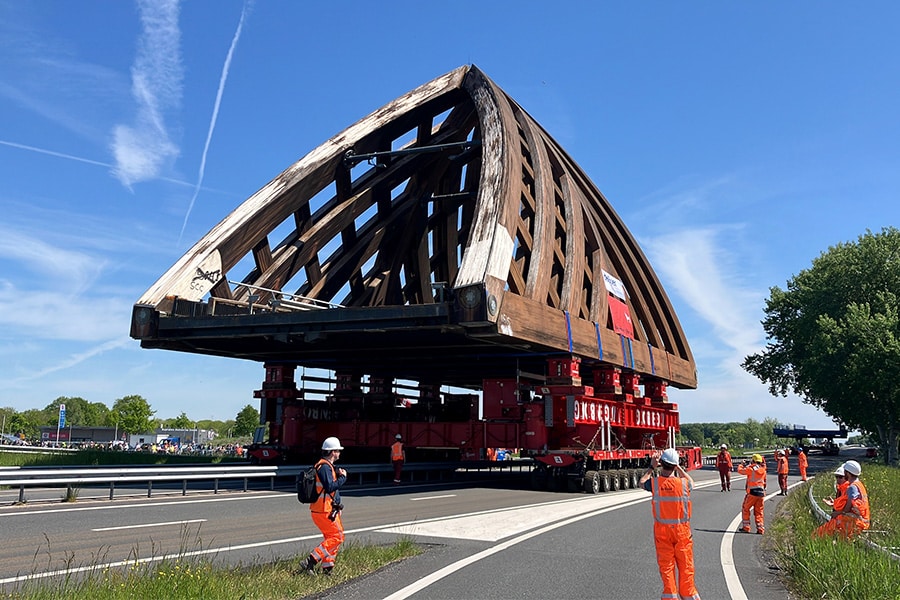
The unusual design of the new Prince Claus Bridge in Dordrecht
The architectural design is of high ambition. For example, the bridge has a special design and a unique movement concept is applied. Gemeente Dordrecht awarded the structural design and execution of the Prince Claus Bridge to construction consortium Dura Vermeer and Hillebrand. Iv-Infra elaborated the reference design for this building consortium into an integral final design and execution design.
Architectural eye-catcher
The Prince Claus Bridge will connect the center of Dordrecht with the new district Stadswerven and will be an architectural eye-catcher for Dordrecht. The unique movement concept and ambitious design of the reference design, prepared by architect René van Zuuk, were the main challenge in the elaboration of the architectural design. In working out a realizable, maintainable and reliable functioning technical design, all components had to be intensively coordinated to meet the high design requirements.

Special design
The bridge is hydraulically driven, with the trap balanced around the axis of rotation by a unique system consisting of an upright, hinged ballast mast held upright by a pendulum rod. When opening and closing, the bridge makes a special movement, with the imposing ballast mast first bending forward and then returning.
The steel abutments are fluid and slender in design. Aanbrug east curls together with two bridge sections around the basement pillar to form a single deck at the end of the bridge. Cyclists and pedestrians passing the bridge are guided around the ballast pylon and pendulum pillar on either side and have a view of the bridge's impressive mechanism. Because the basement does not need to hold a ballast box, it is designed as a flared circular pedestal; slenderly rising from the water.
Progression of imbalance in bridge movement
The balance of the trap shows a strong resemblance to a trap with hinged ballast box. There is one important point where this system differs from a trap with hinged ballast box: the ballast mast also rests horizontally on the pivot point. Thus, the balance of the trap is strongly influenced by the vertical and horizontal fulcrum reaction at the pivot point of the ballast mast, which in turn depends on the position of the hinged system. The balance of the Prince Claus Bridge is therefore less easy to determine than for "traditional" bascule bridges and drawbridges.
When opening the bridge, the closing moment about the pivot axis almost does not decrease until about 45 degrees opening angle, but increases slightly. From 45 degrees the closing moment goes down in a smooth motion. This course is characteristic of the mechanism of the bridge and significantly determines the forces on the drive cylinders of the bridge. The movement of the ballast mast is also complicating for determining wind loads on the bridge. These influences were therefore determined in an ANSYS workbench model and incorporated into the hydraulic drive calculations.

Inventive solutions for the fall
The bridge crosses the waterway at an angle, causing the trap to have angled joint transitions and to be considerably longer than the 23 m wide clearance. Controlling the vertical and horizontal deformations of the trap at the location of the angled joint transitions in interaction with the abutments presented a significant challenge, leading to inventive solutions.
The angled joint of the rear hull of the trap is so far forward of the main pivot point that the vertical difference deformations become too large when the joint is open. In order to keep the deformations within the permissible values, an additional support point under the deck plate at the level of the angled joint was chosen. Releasing the cover plate of the trap from the main girder creates a flexible tensioned joint.
The two front supports of the trap rest on the steel structure of abutment west, which cantilevers beyond the pillar. Thus, instead of a rigid foundation, the bridge is imposed at the front harbor on a flexible cantilever with different (but coupled) vertical spring stiffness due to the inclined joint. To ensure an equal distribution of imposition forces from the imbalance of the fall, it was chosen to raise one of the two supports slightly higher in the unloaded position by means of a sheer.

Bridge Drive
The bridge is driven by an electrohydraulic actuator consisting of two hydraulic cylinders and an electrohydraulic pumping unit. The cylinders are coupled to the halyard and basement floor with two pivot points that are equipped with fiber-reinforced plastic spherical hinge bearings. For this purpose, the cylinders are equipped with a bottom eye and rod eye, in which the bearings are incorporated. The rod eye is connected by a hinge pin to two cheek plates, connected to the coupling tube between the main beams of the trap. The bottom eye is pivotally connected to the two cheek plates of the welded cylinder substructure connected to the basement floor by prestressed anchors. To best distribute the forces in normal bridge operation to both cylinders, they are hydraulically coupled on both bottom and rod sides. As a result, they move as if they were one cylinder.
Construction in full swing
After an intensive design process, construction of the Prince Claus Bridge is now underway. The bridge's design makes it a complex and challenging project, but the construction consortium is aiming to deliver the bridge by mid-2021.




